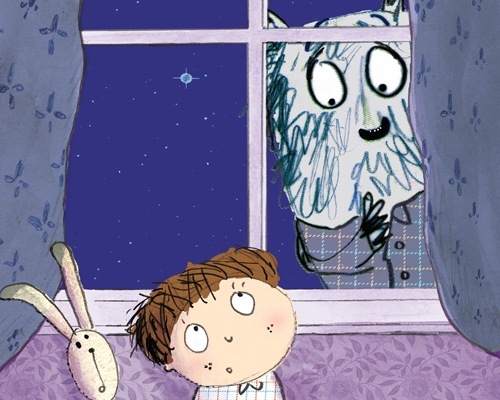Cressida Cowell chats about Emily Brown and the King
Cressida Cowell – writer of ”How to Train Your Dragon” has teamed up with Tall Stories to stage Emily Brown and the Thing. We caught up with her to find out about her writing.

Are there any children’s books that made a big impression on you when you were a child?
I read a wide variety of books: domestic books like Noel Streatfeild and Enid Blyton, but my particular preference was for fantasy like Diana Wynne Jones; Ursula Le Guin; Tolkien and Lloyd Alexander.
My favourite book as a child was ‘The Ogre Downstairs’ by Diana Wynne Jones. I loved this book so much that I read it to my younger brother and sister, to my little cousins – to anyone who would listen! It has a wicked stepfather, and chemicals that make you fly, and turn you invisible, and bring your toys to life. My children loved it as much as I did 38 years ago.
How did you become an author?
I have been writing stories since I was about eight or nine years old. But I was about 33 when I had my first book published. It was called’ Little Bo Peep’s Library Book’, and it was a picture book.
What was the inspiration to create the Emily Brown series?
The inspiration for the Emily Brown series was an incident that happened with my daughter Maisie when she was about three or four. Maisie had this small toy dog called Mr Dog, and wherever Maisie went, Mr Dog went too. She and the dog were absolutely inseparable…
Until one terrible day, when Maisie was about to go to bed, and we couldn’t find Mr Dog. We looked everywhere, and I mean EVERYWHERE…under sofas, behind chairs, in cupboards, in the garden…but Mr Dog was nowhere to be found.
For the first time in her life, Maisie had to go to bed without Mr Dog, and she was inconsolable; she cried herself to sleep. But even the next day, there was still no sign of Mr Dog, although the whole family turned the house upside down looking for him.
A couple of days later, I was cooking supper, and I opened up the freezer, and there, sitting on top of the fish fingers, as cool as you please, was Mr Dog! We’d looked everywhere, but of course, we hadn’t thought to check the freezer. So I said to a delighted Maisie, ‘What is Mr Dog doing in the freezer?’
And Maisie said, ‘Oh I remember now, he was looking for the north pole…’
So that was the inspiration for the book, the extraordinary imaginary adventures that children go on with their toys, and also the strength of the bond between the child and the toy.
Are any of the characters in the Emily Brown books like you?
I have to confess, I do rather identify with Matilda’s mummy, the hardworking but anxious mother elephant in ‘Emily Brown and the Elephant Emergency’. My children are always telling me that I have a tendency to worry too much about things – and I know they’re right, which is why I wrote the book.
Why do you like to write for young people?
I love being able to reach kids that wouldn’t ordinarily pick up a book to read.
Who are your favourite authors?
Ooo dear, I’m terrible at favourites; there are just too many wonderful writers to choose from. I love David Almond, Lauren Child, Louis Sachar, Eva Ibbotson, Michelle Paver, and so many, many more.
How old were you when you realised you wanted to be a writer?
I was about eight or nine. When I was a child my handwriting was terrible, my spelling was incomprehensible but I loved writing stories… Aged nine I entered a writing competition which, to my amazement, crowned me the winner! It gave me the confidence to think, ‘I could be a writer one day’.
What advice would you give kids who would like to become writers?
My top writing tip would be to read lots, to give you a feel for the way different stories can be told. Also practise writing as much as you can – write, and re-write – don’t worry if you don’t finish a story, as long as you are practising, that’s what matters.
What advice would you offer to parents who want to encourage their kids to read more or love books?
Reading a book with a child, even an older child, is the most important thing you can do for improving literacy and communication skills: books read to a child in their parent’s voice will live with them forever. Sharing a book with your child, whatever their age, communicates how important books are. I read aloud with my children, even now they’re older, both picture books and older books, and we also listen to audio books in the car. I take them to libraries, bookshops and second-hand bookshops – libraries and second-hand bookshops are particularly good for children experimenting and trying books that they might not have expected to like… I think it’s also vitally important for children to see their parents reading so they know that it’s a lifelong enjoyment.
What would your school reports have said about you?
They said that I day-dreamed a lot and that I was very disorganised. Here is an extract from one of my school reports, written by one of my teachers when I was 16: ‘To follow up one of Mr. Byrom’s points, there was at least one examination for which she had very little idea of the exact time until shortly before the examination was due to begin.’
Emily Brown and the Thing is at the Lowry from 28 October until 2 November.












